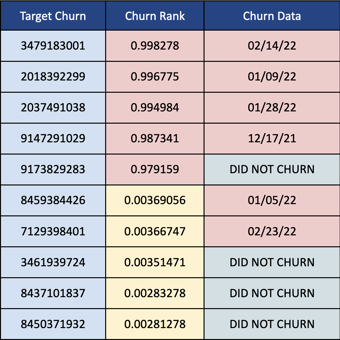Predicting customer churn holds a key role in helping telecom companies effectively retain customers. The expense associated with acquiring new customers far outweighs the cost of retaining existing ones. That's why voice providers are diving into AI to identify customers who might be considering switching to another service and take proactive measures.
Amid ongoing shifts in the telecom industry, better-priced deals and packages are driving more people to switch carriers, leaving providers at times feeling powerless as they witness waves of customer departures.
Using ML to Predict Which Customers Might Churn
Even after a customer churns, their historical data can provide value to the provider. Delving deeper into their usage patterns and certain variables can unveil insights into why those customers chose to leave.
By combining historical data with predictive algorithms and machine learning, providers can not only pinpoint a set of key indicators that explain customer departures but also anticipate the probability of current customers churning in the future.
This proactive approach allows providers to step in and take action to retain customers before they make up their minds to switch elsewhere, ultimately improving their customer retention strategies.
How Can One Predict When a Customer Might Churn?
Through this application of predictive analytics, ATS is tackling this challenge head-on, offering providers valuable insights into their data to enhance customer retention and refine their churn strategies.
Our churn module evaluates a customer's propensity to churn through the analysis of customizable variables finely tuned to match a company's specific target customer base. Among these variables, we observe both negative and positive relationships with our predicted outcome - churn.
Identifying a variety of variables in historical data allows the ML model to pinpoint and value the factors that have the most significant impact on impending churn within the customer base in the next 30-60 days.
Below is an example output of the model;

Once we have an array of variables that are indicators, the model can then compute a churn propensity score for each customer, measured on a scale from 0 to 1. Higher scores indicate a higher likelihood of churn.
Our tests have demonstrated that this predictive model consistently identifies customers with an average churn rate between 15-25%, which is ten times more effective than random selection.
I Know Which Customers Are At Risk of Churning. Now What?
Once the provider identifies customers at risk of churning, ATS can provide recommendations for the best strategies to retain these customers and prevent them from switching to other providers.
This method uses predictive ML models to serve multiple crucial roles in enhancing customer satisfaction with their service provider and current data plans. It offers valuable insights into several key areas, including:
Acquisition: Understanding past customer behaviors aids in tailoring acquisition strategies to attract the right audience.
Cross-sell: Identify opportunities to offer complementary services or products to existing customers.
Up-sell: Providers can pinpoint moments when customers may be receptive to upgrading their plans.
For example, historical data plays a pivotal role in "right-sizing" each customer's plan. Examining customer data usage patterns can reveal if they are underutilizing their allocated data, potentially justifying a downgrade to a more suitable plan. Conversely, if a customer frequently exceeds their data plan, it may be prudent to target them with a higher plan to better match their needs and reduce overage charges.
This proactive approach not only enhances customer satisfaction but also contributes to better customer retention and revenue optimization.
ATS' churn solution empowers providers with precise customer insights, enabling them to plan and allocate resources more effectively and strategically. By pinpointing customers with a higher likelihood of churning, companies can allocate their marketing budget more efficiently, directing their efforts toward targeted retention strategies.
To learn more about how we're using telecom data to benefit carriers, take a look through our ESAP webpage. If you have any questions or are interested in demo-ing our churn platform, don't hesitate to give us a shout by filling in the form below.
